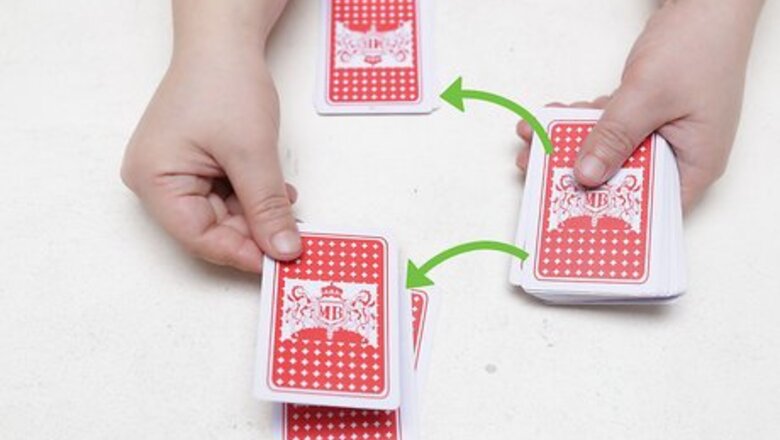
views
- Deal 7 cards to each player, then place the deck face-down on the table. Turn 4 cards face-up around the deck.
- Draw a card, then place cards onto the 4 stacks in alternating colors and descending order. Play as many cards as you can.
- Merge stacks if the bottom card of 1 stack is the opposite color and 1 number lower than the top card of another stack.
- Win the game by being the first player to discard every card in your hand.
Dealing the Cards
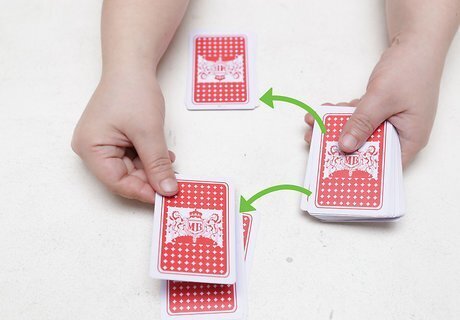
Deal 7 cards to each player. Shuffle the deck to mix up the cards, then deal 7 cards to each player at the table, starting with the player to the left of you and distributing cards clockwise. Then, place the deck face-down in the center of the table. If your deck of cards came with jokers, extra cards, or instruction cards, remove them from the deck so there are only the 52 standard cards.
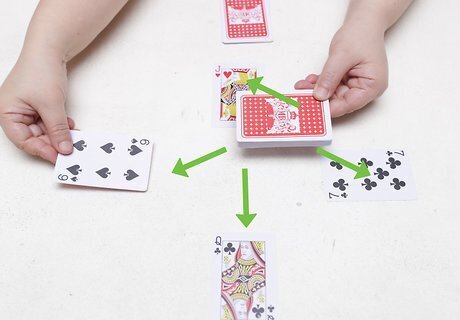
Place 4 cards face-up around the deck. Turn over the top 4 cards in the deck and lay them out in a cross pattern on the table, with 1 card facing each direction. If any kings come up, move them to one of the corners (the open spaces between the 4 cards of the cross). Fill the space left by the king with a new card from the deck, face-up like the others. The piles created by these 4 (non-king) cards are called the “foundation piles.”
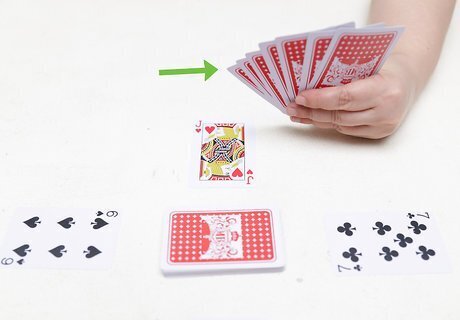
Pick up and sort your cards. In Kings Corners, players hold their cards in their hands, concealed from the other players. It’s generally a good idea to sort your cards by suit in ascending or descending order, with kings being high and aces low.
Playing the Game
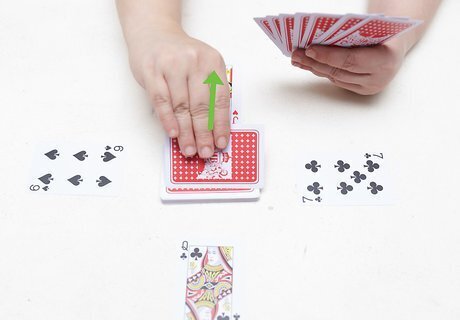
Draw the first card. The player to the dealer’s left takes the first turn. They draw a single card from off the top of the discard pile, then place it into their hand. Each turn will begin this way, by drawing 1 card.
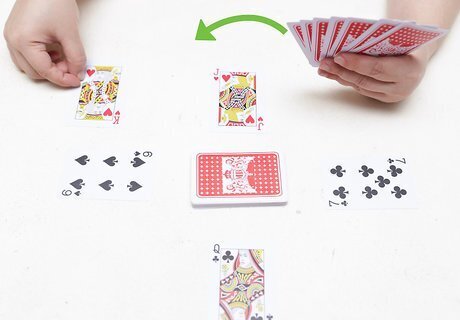
Discard as many cards as you’re able. There are 2 ways a player can discard. First, if a player has a king, they place the king in an empty corner to start a “king’s corner.” Kings can only be played in the corners, but you don’t have to play a king immediately, if you have one. Second, a player may discard a card that’s the opposite color and 1 number lower than the top card of any pile, placing the discarded card on top. The sequence of cards in the game is K, Q, J, 10, 9, 8, 7, 6, 5, 4, 3, 2, A. Aces may only be played at the end of a sequence, and don’t begin a new sequence. For example, on a black king, you may only place a red queen. On a red five, you may only place a black four, and so on. Just like playing Solitaire! If the last (or only) card in a foundation pile is an ace, nothing can be played on this card; the pile can only be merged with another pile.
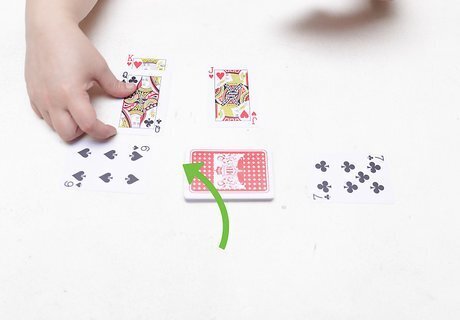
Merge any piles, if you’re able. When it’s your turn, you may merge piles on the table if the bottom card of one pile is a different color and 1 value lower than the top card of another. Once a foundation pile has been moved, the player who moved it may fill the empty space with any card or card sequence from their hand. For example, you may merge a pile that begins with a black 6 onto another pile that has a red 7 as the top card. If you choose to move a pile, you must move the entire pile, not just some of the cards within the pile As an optional rule, gather and set aside any completed piles (piles that include all cards from king to ace) to make room for a new pile.
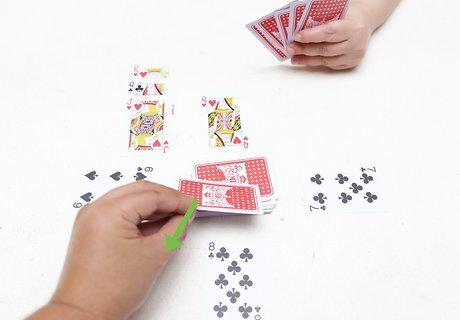
End your turn once you can’t discard or merge any more piles. After you’ve made all your possible moves (or at least however many moves you want to play), end your turn. The next player to the left then draws a card, and discards or moves whatever piles they can. Always remember to pick up 1 card at the beginning of each turn. If a player cannot make any moves on their turn, the turn passes to the player on their left. When the center deck runs out, continue playing without drawing cards.
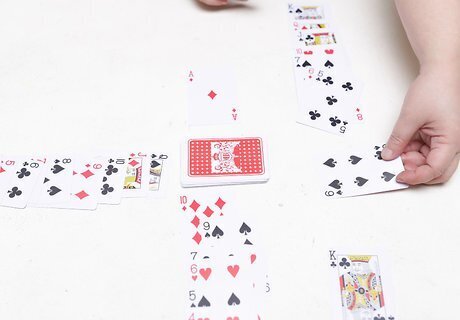
Play until 1 player discards all their cards. The game ends as soon as a player discards the very last card, leaving their hand empty. That player is the winner! Time to shuffle the cards and play again.
Trying Variations
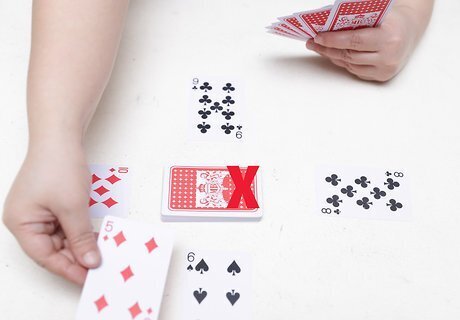
Draw another card at the end of the hand. In some versions of the game, players only draw a card if they cannot play any cards from their hand. Also, players do not pick up a new card at the beginning of each turn. In other version, players draw a second card at the end of their turn, in addition to the card they drew at the start.
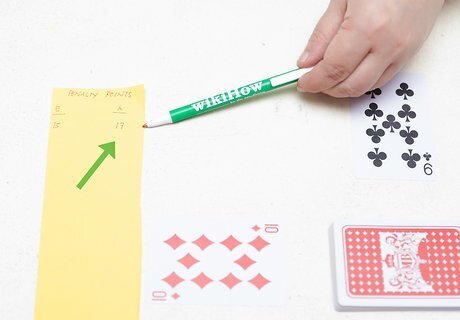
Play multiple rounds by tracking your points. To play a continuous game of multiple rounds, tally the number of cards you have in your hand. That number is your new score. For example, if you have 5 cards left in your hand when the round ends, write down 5 points. Play a few more rounds and compete to be the player with the lowest score. Also allot 10 points for every king left in a player’s hand. The game ends once a player reaches or exceeds a certain score, such as 25 or 50 points. When a player reaches or exceeds the given score, the player with the fewest points wins.
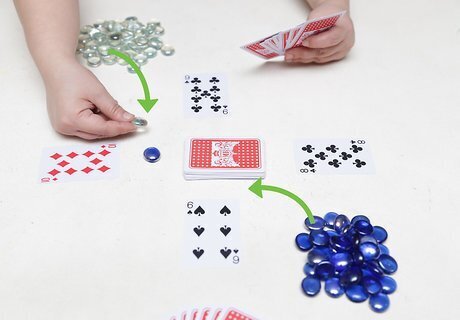
Keep score with poker chips. Distribute 80 poker chips (or any other sort of token) evenly among the players. At the start of the round, each player pays 1 chip into the center of the table, or the “pot.” Each time someone exhausts their hand and wins a round, they take the entire pot for themselves. The first player to hold 100 chips wins the game. If any player cannot discard any cards on their turn, that player pays another chip into the pot. Alternatively, play so that players have to pay a chip for each card left in their hand at the end of each round, similar to the point system (paying 10 chips for a king and 1 chip for every other card).


















Comments
0 comment